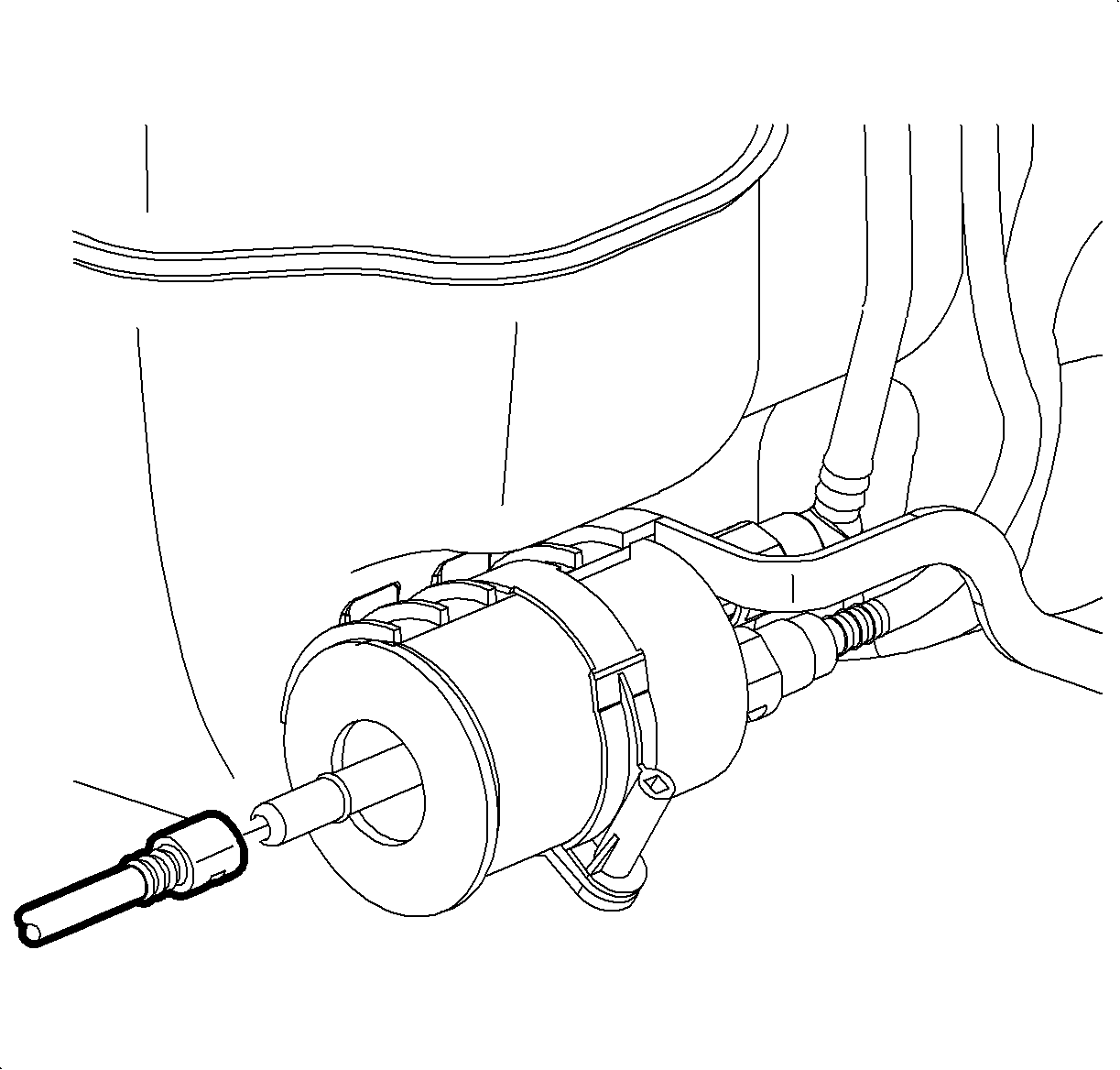Fuel Hose/Pipes Replacement - Chassis feed
Tools Required
J 37088-A Fuel Line Disconnect Set
Removal Procedure
- Position the vehicle on a hoist.
- Relieve the fuel system pressure. Refer to Fuel Pressure Relief .
- Disconnect the negative battery terminal.
- From underhood, remove the fuel line clip and using the J 37088-A , disconnect the fuel feed line from the fuel rail.
- Disconnect the EVAP purge line from the EVAP purge solenoid.
- Raise the vehicle to a comfortable working height.
- Disconnect the chassis fuel feed line from the fuel filter outlet and remove the plastic retainer from the fuel filter.
- Disconnect the EVAP purge line from the EVAP canister.
- Release the fuel and EVAP purge lines from underbody retainers.
Caution: Ensure that the vehicle is properly supported and squarely positioned. To help avoid personal injury when a vehicle is on a hoist, provide additional support for the vehicle on the opposite end from which the components are being removed.
Notice: Fuel/Vapor lines cannot be spliced or repaired. The line must be replaced (if damaged) with the same type of line.

Caution: Do not allow smoking or the use of open flames in the area where work on the fuel or EVAP system is taking place. Anytime work is being done on the fuel system, disconnect the negative battery cable, except for those tests where battery voltage is required.
Caution: Whenever fuel lines are removed, catch fuel in an approved container. Container opening must be a minimum of 300 mm (12 in) diameter to adequately catch the fluid.

Important: To facilitate removal, it may be necessary to spray quick connect fittings with penetrating oil to remove debris.

Installation Procedure
- Make sure the lines are not kinked, bent, or damaged.
- Install the fuel and EVAP lines into underbody retainers. Make sure the lines are properly routed and attach retainers to the vehicle.
- Install the new plastic retainer into the female quick connect fitting and connect the chassis fuel feed line onto the fuel filter.
- Connect the EVAP purge line onto the EVAP canister.
- Lower the vehicle from the hoist.
- Connect the fuel feed line to fuel rail and install the safety clip.
- Connect the negative battery terminal.
- Prime the fuel system.
- Run the engine and check the system for leaks.

Notice: Replace plastic fuel line retainers whenever the fuel supply or return line is disconnected at the fuel rail. Install the new retainer into the female cavity of the connection. Care must be taken to ensure that the locking tab is centered in the window of the female cavity. Firmly press the female connection onto the male end until a click is heard, then pull back to confirm engagement. Pinched, kinked, or damaged fuel lines must be replaced.
Notice: Fuel/Vapor lines cannot be spliced or repaired. The line must be replaced (if damaged) with the same type of line.


Tighten
Tighten the battery terminal bolt to 17 N·m
(13 lb ft).
| 8.1. | Cycle the ignition ON for 5 seconds and then OFF for 10 seconds. |
| 8.2. | Repeat step 8.1 twice. |
| 8.3. | Crank the engine until it starts. The maximum starter motor cranking time is 20 seconds. |
| 8.4. | If the engine does not start, repeat steps 8.1-8.4. |
